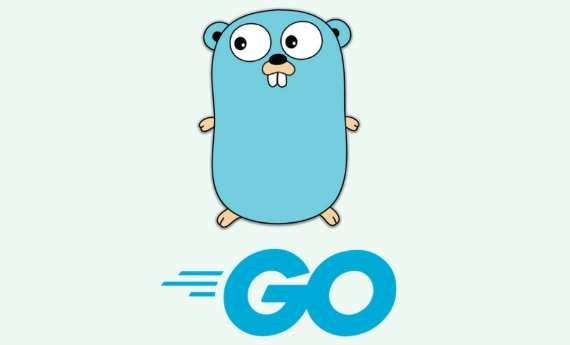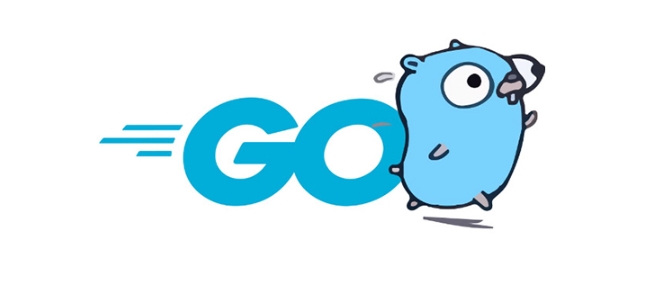Go's type system is based on structures, interfaces and combinations, rather than classes and inheritance. Its core features include: 1. Declare new types through type, enhance type safety, and explicit conversion of different underlying types; 2. Use structure nesting to implement combinations, replace inheritance, and reduce coupling; 3. Define methods for any named type, the value receiver operates a copy, and the pointer receiver can modify the original value; 4. The interface supports polymorphism through implicit implementation, and as long as the corresponding method of the type is implemented, it can be assigned to the interface; 5. The empty interface any can represent any type, and restore specific types through type assertions or type switch; 6. Go 1.18 introduces generics to support writing type-safe general code. The system ensures type safety, code reuse and flexibility through explicit conversion, combinatorial, implicit interfaces, and generics, ultimately prompting developers to write clear, decoupled, and easy to test programs.

Go's type system design is concise and clear, emphasizing security and readability, while avoiding the complex inheritance system in traditional object-oriented languages. Understanding Go type system is a key step in mastering Go programming. It is not based on classes and inheritance, but is built around structures, interfaces, and combinations.

1. Basic types and type declarations
Go has common basic types, such as int , string , bool , float64 , etc. In addition, you can define new types through type keyword:
type UserID int type Email string
Although the underlying UserID is int , it is a different type . You cannot assign int directly to UserID variables, you must convert explicitly:

var uid UserID = 42 // Error: Cannot implicitly convert var uid UserID = UserID(42) // Correct: Explicitly convert
This mechanism enhances type safety and avoids misuse between different types (such as confusing user ID and order ID).
2. Structure and combination
Go does not support inheritance, but implements code reuse through structure nesting (combination) :

type Person struct {
Name string
Age int
}
type Employee struct {
Person // Anonymous field, realizing the "inheritance" effect Salary float64
} At this time, Employee will "inherit" Person 's fields and methods:
e := Employee{
Person: Person{Name: "Alice", Age: 30},
Salary: 50000,
}
fmt.Println(e.Name) // Direct access to nested fieldsThis is called combination is better than inheritance - you are not saying "Employee is a Person", but you are saying "Employee has a Person", with clearer semantics and lower coupling.
3. Methods and Recipients
Go allows defining methods for any named type (as long as they are defined in the same package):
func (p Person) Greet() {
fmt.Printf("Hi, I'm %s\n", p.Name)
}
func (p *Person) SetName(name string) {
p.Name = name
}Note the receiver type:
- Value Receiver (
Person): The method operates on the copy. - Pointer Receiver (
*Person): The method can modify the original value.
Typically, if the structure is larger or the method requires modifying the field, use the pointer receiver.
4. Interface: Abstraction of behavior
Go's interface is implicitly implemented , which is one of its most powerful features.
Define an interface:
type Speaker interface {
Speak() string
} As long as a type implements Speak() method, it automatically implements the Speaker interface:
func (p Person) Speak() string {
return fmt.Sprintf("Hello, I'm %s", p.Name)
}
var s Speaker = Person{"Bob", 25} // No explicit declaration of implementation requiredThis "duck typing" mechanism makes the code more flexible: you don't need to plan the relationship between types in advance, as long as the behavior matches, it can be used.
5. Empty interface and type assertion
interface{} (before Go 1.18) or any (Go 1.18) can represent any type:
var x any = "hello" x = 42 x = true
To restore a concrete type from any , a type assertion is required:
str, ok := x.(string)
if ok {
fmt.Println("It's a string:", str)
} Or use switch to make type judgment:
switch v := x.(type) {
case string:
fmt.Println("String:", v)
case int:
fmt.Println("Int:", v)
default:
fmt.Println("Unknown type")
}6. Generics (Go 1.18)
Go introduced generics in 1.18, supporting writing generic code for type-safe:
func Map[T, U any](slice []T, f func(T) U) []U {
result := make([]U, len(slice))
for i, v := range slice {
result[i] = f(v)
}
return result
}Now you can safely do mapping operations on any type slice without type assertion or duplicate code.
Basically that's it. Go's type system is not complex, but very practical:
- Type safety is guaranteed by explicit conversion and type declaration
- Reuse depends on combination rather than inheritance
- Implicit implementation of polymorphism by interface
- Generic code is supported by generics
It encourages you to write clear, decoupled, easy to test code instead of getting stuck in the quagmire of type levels.
The above is the detailed content of Understanding Go's Type System. For more information, please follow other related articles on the PHP Chinese website!

Hot AI Tools

Undress AI Tool
Undress images for free

Undresser.AI Undress
AI-powered app for creating realistic nude photos

AI Clothes Remover
Online AI tool for removing clothes from photos.

Clothoff.io
AI clothes remover

Video Face Swap
Swap faces in any video effortlessly with our completely free AI face swap tool!

Hot Article

Hot Tools

Notepad++7.3.1
Easy-to-use and free code editor

SublimeText3 Chinese version
Chinese version, very easy to use

Zend Studio 13.0.1
Powerful PHP integrated development environment

Dreamweaver CS6
Visual web development tools

SublimeText3 Mac version
God-level code editing software (SublimeText3)

Hot Topics
 How to solve the user_id type conversion problem when using Redis Stream to implement message queues in Go language?
Apr 02, 2025 pm 04:54 PM
How to solve the user_id type conversion problem when using Redis Stream to implement message queues in Go language?
Apr 02, 2025 pm 04:54 PM
The problem of using RedisStream to implement message queues in Go language is using Go language and Redis...
 What should I do if the custom structure labels in GoLand are not displayed?
Apr 02, 2025 pm 05:09 PM
What should I do if the custom structure labels in GoLand are not displayed?
Apr 02, 2025 pm 05:09 PM
What should I do if the custom structure labels in GoLand are not displayed? When using GoLand for Go language development, many developers will encounter custom structure tags...
 Which libraries in Go are developed by large companies or provided by well-known open source projects?
Apr 02, 2025 pm 04:12 PM
Which libraries in Go are developed by large companies or provided by well-known open source projects?
Apr 02, 2025 pm 04:12 PM
Which libraries in Go are developed by large companies or well-known open source projects? When programming in Go, developers often encounter some common needs, ...
 Do I need to install an Oracle client when connecting to an Oracle database using Go?
Apr 02, 2025 pm 03:48 PM
Do I need to install an Oracle client when connecting to an Oracle database using Go?
Apr 02, 2025 pm 03:48 PM
Do I need to install an Oracle client when connecting to an Oracle database using Go? When developing in Go, connecting to Oracle databases is a common requirement...
 In Go programming, how to correctly manage the connection and release resources between Mysql and Redis?
Apr 02, 2025 pm 05:03 PM
In Go programming, how to correctly manage the connection and release resources between Mysql and Redis?
Apr 02, 2025 pm 05:03 PM
Resource management in Go programming: Mysql and Redis connect and release in learning how to correctly manage resources, especially with databases and caches...
 centos postgresql resource monitoring
Apr 14, 2025 pm 05:57 PM
centos postgresql resource monitoring
Apr 14, 2025 pm 05:57 PM
Detailed explanation of PostgreSQL database resource monitoring scheme under CentOS system This article introduces a variety of methods to monitor PostgreSQL database resources on CentOS system, helping you to discover and solve potential performance problems in a timely manner. 1. Use PostgreSQL built-in tools and views PostgreSQL comes with rich tools and views, which can be directly used for performance and status monitoring: pg_stat_activity: View the currently active connection and query information. pg_stat_statements: Collect SQL statement statistics and analyze query performance bottlenecks. pg_stat_database: provides database-level statistics, such as transaction count, cache hit
 Is the Go language interface a duck type? What is the implementation mechanism of polymorphism?
Apr 02, 2025 pm 02:48 PM
Is the Go language interface a duck type? What is the implementation mechanism of polymorphism?
Apr 02, 2025 pm 02:48 PM
Interfaces and polymorphism in Go: Clarifying common misunderstandings Many Go beginners often connect the concepts of "duck type" and "polymorphism" with Go...
 Why is it necessary to pass pointers when using Go and viper libraries?
Apr 02, 2025 pm 04:00 PM
Why is it necessary to pass pointers when using Go and viper libraries?
Apr 02, 2025 pm 04:00 PM
Go pointer syntax and addressing problems in the use of viper library When programming in Go language, it is crucial to understand the syntax and usage of pointers, especially in...






